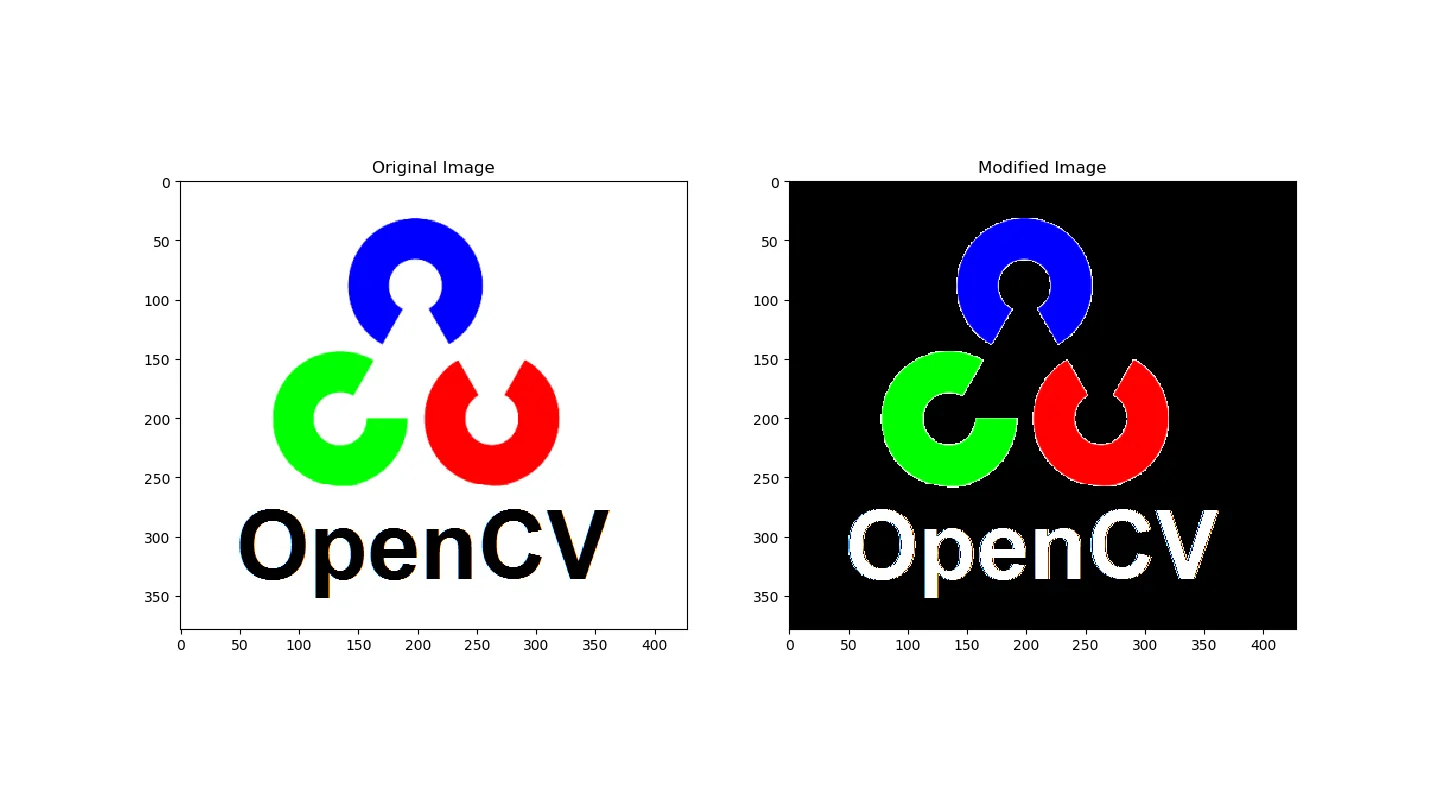需要将下面给出的图片中的白色像素变成黑色,黑色像素变成白色。


import cv2
img=cv2.imread("cvlogo.png")
一个基本的OpenCV标志,白色背景并将图片调整为已知固定大小
img=cv2.resize(img, (300,300))#(width,height)
row,col=0,0
i=0
现在使用for循环按行和列位置检查每个像素。
如果像素是白色,则将其更改为黑色,或者如果像素是黑色,则将其更改为白色。
for row in range(0,300,1):
print(row)
for col in range(0,300,1):
print(col)
if img[row,col] is [255,255,255] : #I have used == instead of 'is'..but there is no change
img[row,col]=[0,0,0]
elif img[row,col] is [0,0,0]:
img[row,col]=[255,255,255]
执行时没有错误,但它没有将像素值分别更改为黑色或白色。此外,if语句也未执行。太多的混乱了。
cv2.imshow('img',img)
cv2.waitKey(0)
cv2.destroyAllWindows()
